In recent years the historic City Centre has experienced a decline. That's not to say that the city is without a beating heart. On any day we have found that a visit yields new surprises, many of them rewarding ones. From unique shopping and fashion experiences to an underground jazz club, a burgeoning informal book trader network to the dunusa markets (a network of second-hand clothing markets), the majesty of the city's historic members' club Rand Club to one of its most evocative traditional spaces, Kwa Mai Mai market (here's 10 things you need to know about Kwa Mai Mai).
But Joburg's architectural riches have sadly become a symbol of the city's downfall. In present-day Johannesburg, most prominent amongst the city’s once-delectable buffet of architecture are its abandoned buildings. The problem is further compounded by an ongoing housing crisis: of Johannesburg’s estimated six million residents, 400,000 families are estimated to be without homes. Consequently, people have resorted to hijacking the city’s abandoned buildings desperately trying to find shelter.
The numbers are hard to confirm – with various sources citing between 100 and 600 buildings, but what we can confirm is that living conditions in these buildings are dire, and several tragedies have resulted from living in hijacked buildings. In August 2023, 77 people lost their lives when a fire broke out in the former head office of Johannesburg's Non-European Affairs Department at 80 Albert Street, also known as the Usindiso Building. Almost exactly a year later, another fire – this time in an abandoned building in Jeppestown – has taken the lives of four people, injured three, and left several more unaccounted for. Unless drastic measures are taken, tragedies such as these will continue to plague our city.
But… hope flows. In the last month, the Rissik Street fountain outside the Gauteng Provincial Legislature has been restored, since it stopped seven years ago in 2017. Or take the Johannesburg City Library, now set for a partial opening within six months according to a statement issued by Stanley Mlambo, director of projects in the Johannesburg community development department, in August 2024. This after being completely closed to the public for four years, since March 2020.
In the lead-up to the big faceoff between the Springboks and the All Blacks at Emirates Airline Park (formerly Ellis Park Stadium) on Sat, Aug 31, the City of Joburg switched on an integrated transport network leading to Doornfontein that hasn't been visibly active for years. Thanks to efforts from Prasa and Jozi My Jozi, it's now possible to catch the Gautrain to Park Station, and from there take the railway line to Emirates Airline Park. The Rea Vaya bus routes also appear to be functioning efficiently and have even warned that busses will once again be occupying the exclusive bus lanes – minibus taxis beware. This shows that the infrastructure still exists, but there's a mystery to be unravelled about what caused the connections to be severed by all these parts, and how it can be so easy in Joburg for things to lose their function.
As Roland Postma, the managing director for Young Urbanists NPC told us, "If our cities like Johannesburg are livable, our country thrives. Unfortunately, this is not the case, as key spaces in our inner city are neither habitable nor serving the public good. As young people, it is our duty to hold officials and politicians accountable – not just every five years during local government elections, but continuously. The efforts of initiatives like Jozi my Jozi exemplify the power of collective action in striving for a more livable Johannesburg. The countless abandoned buildings in the city pose a significant risk to families and communities. The lack of maintenance and co-ordination by various municipal entities is a ticking time bomb, and we must work together to reimagine these spaces – whether for housing, transitional accommodation, libraries, crèches, or public spaces that are safe, inclusive, and accessible to all. The frameworks and policies exist, but there is a lack of capacity and action from the government, and we must change that."
And when it comes to abandoned buildings, Johannesburg is not alone in its struggle. On our travels beyond Joburg, we have encountered myriad ways of transforming the fortunes of buildings that have outlived their original purpose. In Kosovo, the derelict Grand Hotel Pristina was reimagined as the host of an art biennale in which the remains of hotel rooms were transformed into viewing rooms and exhibition spaces. An equally creative solution is found in Chicago, where the previously abandoned Stony Island Arts Bank is now home to several galleries, event spaces, and a magnificent library. A derelict apartment building in Nguyễn Huệ, Vietnam, has been repurposed to accommodate small businesses that include clothing stores, cafés and a tea shop, and Former Town Mill in the small town of Graz, Austria, is now a popular apartment complex.
There are two lessons to be learnt from these examples. The first is that creativity and determination are needed to improve life in the city. The second is that no matter how dire things may seem, there is always possibility.
In 2014, a guerrilla campaign in Joburg's City Centre saw several abandoned buildings adorned with splotches and stripes of pink. This campaign aimed to bring more attention to the problem of neglected buildings. It was "a love letter to land owners, our chief executives, and our politicians" and love and care are exactly what these buildings – and their occupants – need.
While many of those buildings remain derelict, Joburg has several great examples demonstrating the potential solutions to abandoned buildings. What was run-down and deserted not too long ago can be transformed into a vibrant pocket of activity with the right backing, and the will. Below are some of our favourite examples of Johannesburg’s repurposed buildings.
5101 in Ponte City

Ponte was once one of Johannesburg’s most infamous hijacked buildings. But that's now part of it's history. Present-day Ponte is a well-functioning residential block on the edge of Hillbrow. Today you can visit the building by booking a tour with Dlala Nje, who supports the community centre in the giant complex. The 51st floor, 5101, is a popular spot for events, sundowners, and anyone who loves a good view. Dlala Nje also hosts the Ponte Challenge (Sep 2024), during which you have the unique opportunity to "run, walk, or crawl" the (too many to count) stairs to the top of the building. Read our #MyJoburg interview with Nickolaus Bauer, journalist and Dlala Nje co-founder here.
Victoria Yards
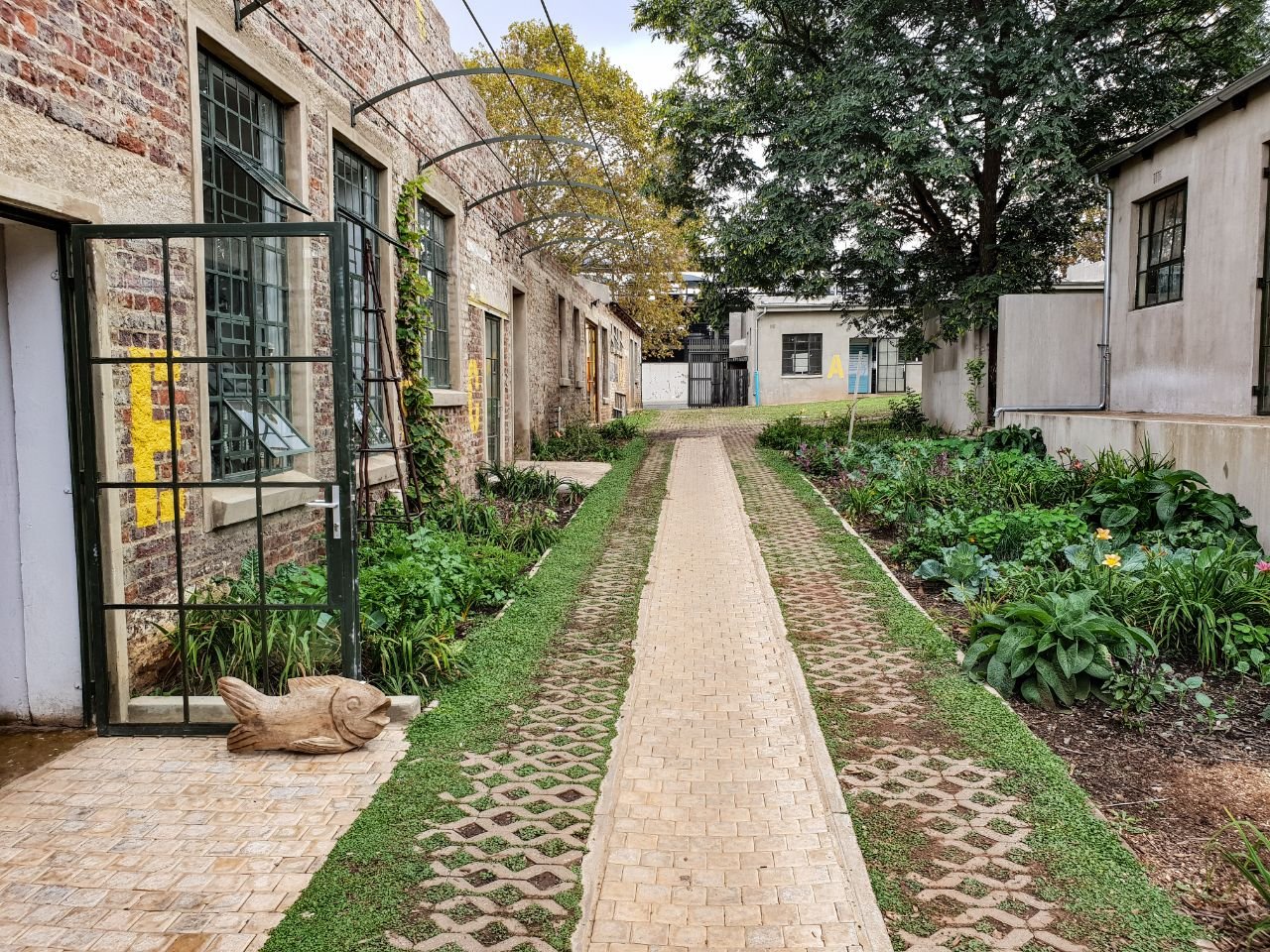
Located in the heart of gritty Lorentzville, Victoria Yards is home to some of Joburg's most gifted creatives. What used to be steam laundry, and then a chop shop, is now a magical place of design, art, urban farming, and food. Victoria Yards is also a popular event space and will be the venue for Night of 1000 Drawings (Sep 2024); it also offers a popular monthly First Sunday Market and a Vintage & Vinyl Market.
Play Braam

It is all in the name: Play Braam is where people come to play. Located at several locations in Braamfontein, this complex is part of an ongoing project to revive the historic buildings in the district. Amongst the treats visitors can expect are pop-up shops, restaurants, bars, retail spaces, galleries, and the beloved The Playground, the place to hang out on summer weekends. Play Braam is also home to a design school, an internationally renowned apartment block, offices, and a rooftop basketball court. Games with a view, indeed.
Maboneng Precinct
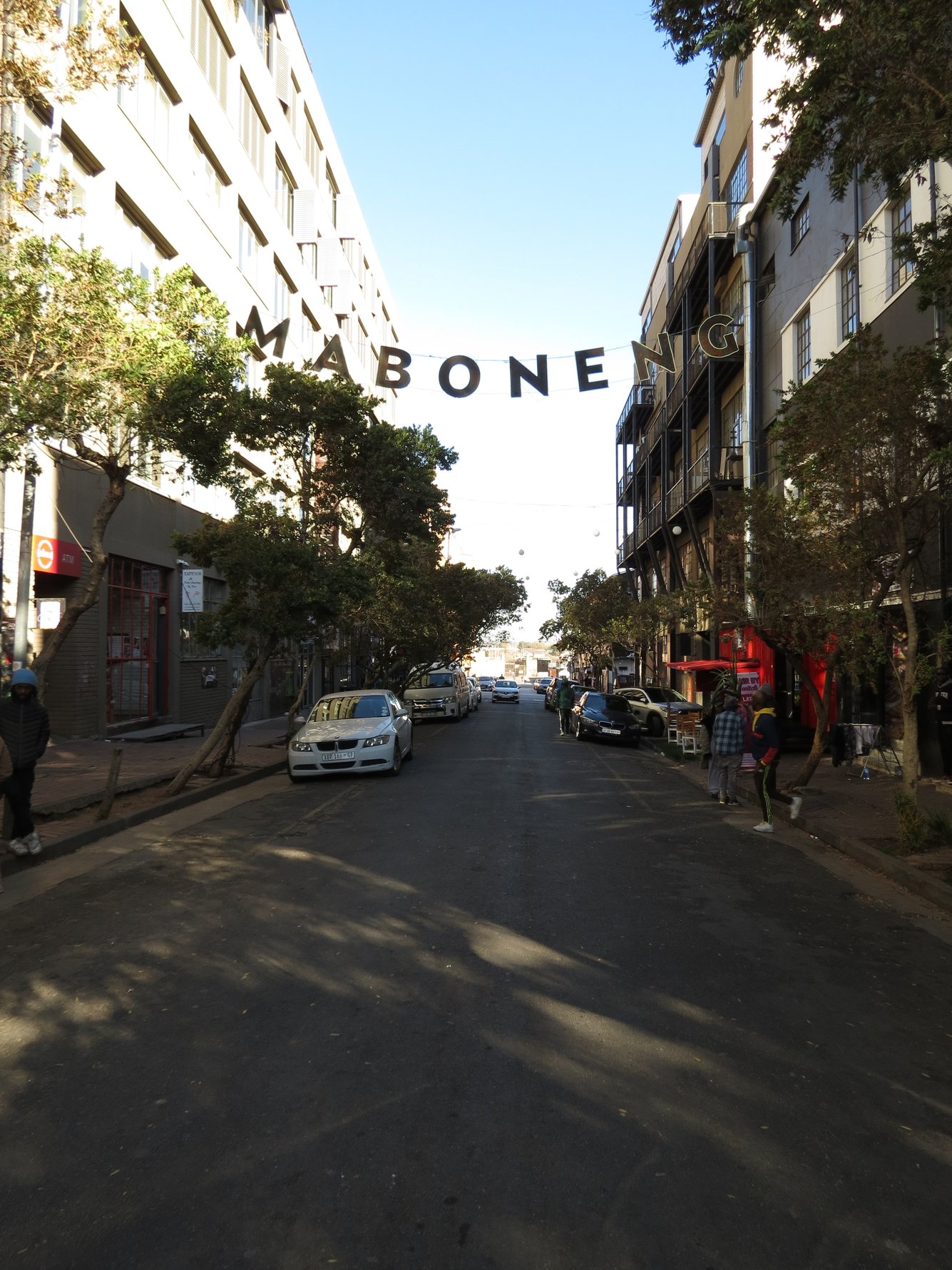
Sotho for 'place of light,' Maboneng offers something for everyone. What started as several abandoned buildings repurposed into small-scale studios has now become one of the fastest-growing precincts in the country. Since its birth in 2008, more than 50 formerly commercial and light industrial structures have been converted to create a place of food, fun, and (fairy)lights. Read about our 10 must-do Maboneng experiences here.
Rand Steam Shopping Centre
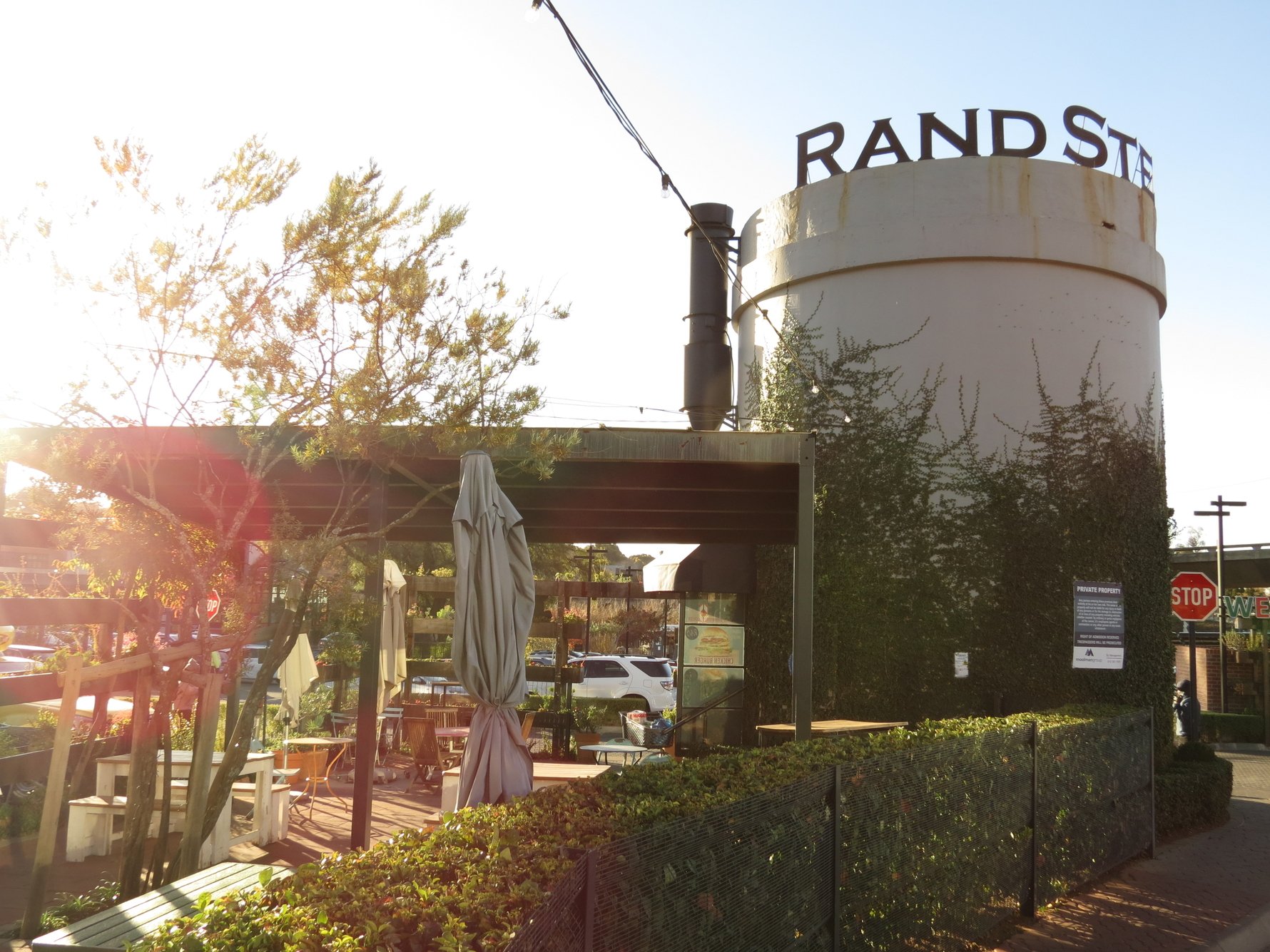
Once a steam laundry, Richmond’s Rand Steam Shopping Centre is a perfect blend of old and new. In the early 20th century, Rand Steam was an industrial-scale laundry complex that traced its history back to Joburg's early amawasha, Zulu men who washed the filthy laundry of Joburg's dusty mineworkers from a nearby stream. This historic structure – which includes a restored water tower and original brickwork – is now an eclectic shopping centre that houses an array of restaurants and shops, including artisanal homeware and a coffee shop in a tranquil urban garden.
Creative Uprising Hub at Transwerke

Despite its unexpected location over the hill at the opposite end of the Constitution Hill precinct, Transwerke is one of several creative hubs in Johannesburg. What used to be a maternity hospital is now home to more than 60 artists and artisans. It is a place of collaboration and creativity, as well as an example of the dormant potential in Johannesburg. Read more about Creative Uprising Hub (at Transwerke) at Constitution Hill here.
44 Stanley
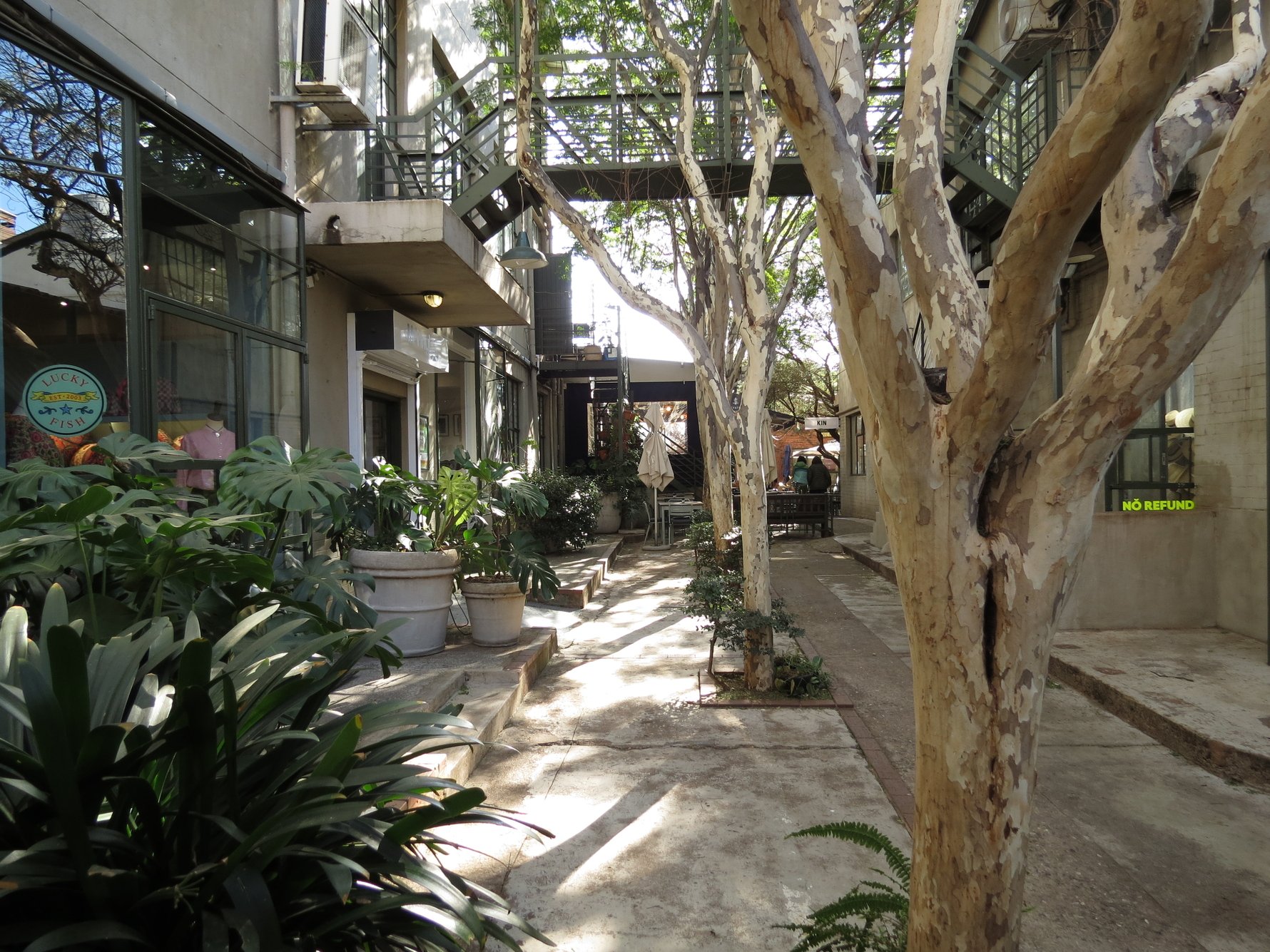
Built in the 1930s in Braamfontein Werf, 44 Stanley was once a light industrial complex. It was repurposed in 2003 into a leafy, mixed-use development. At present, 44 Stanley boasts an eclectic range of boutiques and restaurants, as well as a vinyl shop (Mr Vinyl), the gallery, and L'Elephant Terrible, which is a second-hand bookshop. Read our 44 Stanley visitors' guide here.


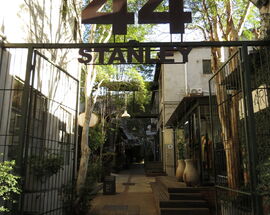
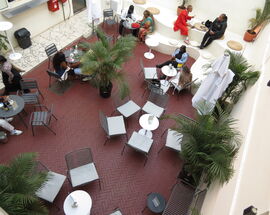
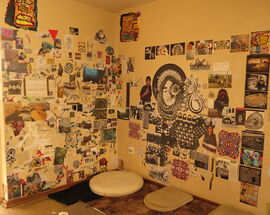


Comments